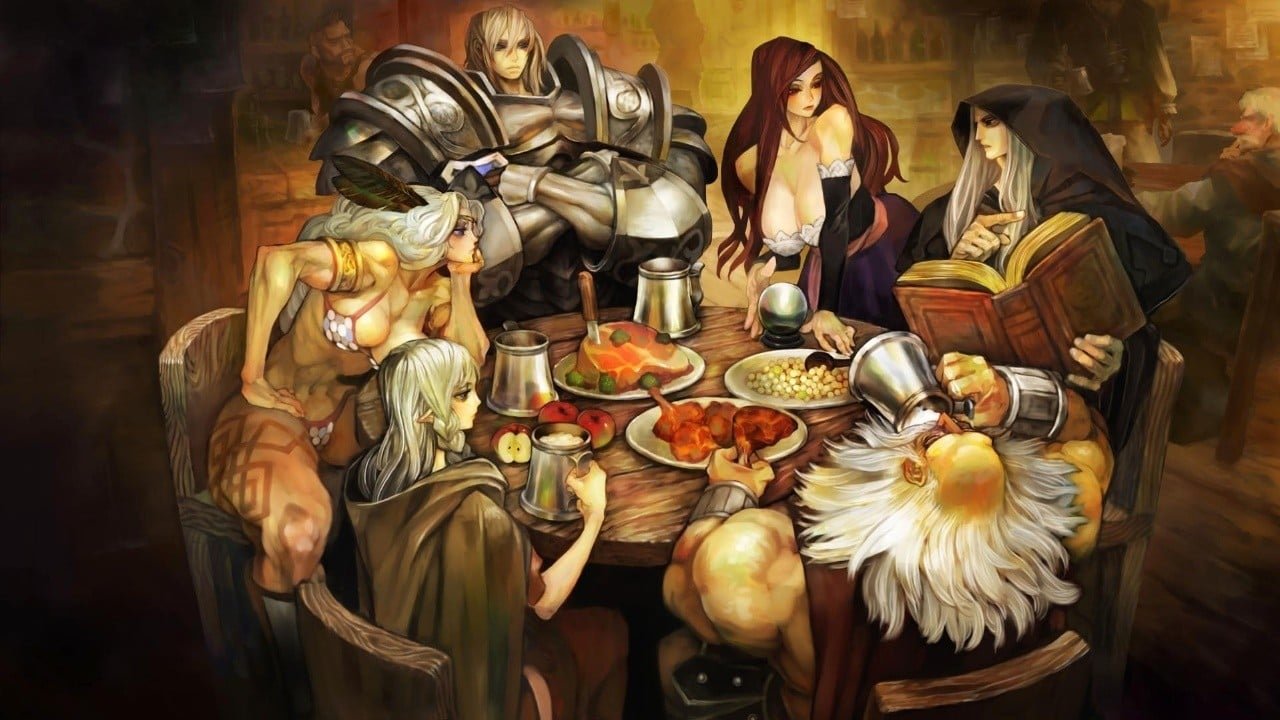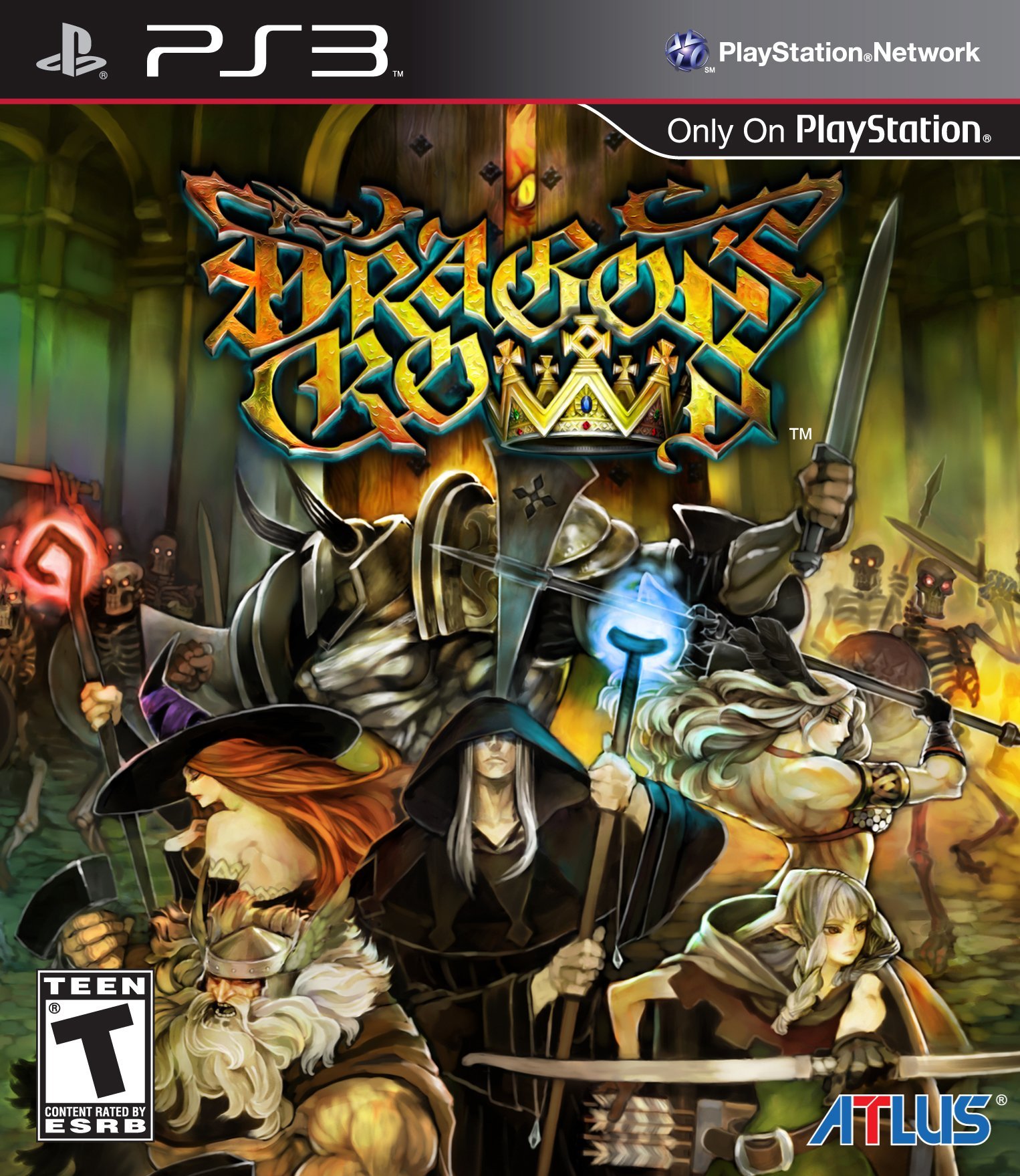Dragon’s Crown is, to me, a surreal beast if only because when I sit down and play it, I think to myself, “This is pretty much what Dungeons & Dragons: Shadow of Mystara looked and played like back in the day.” The problem is, I recently played the HD port for review and found out just how severely distorted my nostalgia goggles were. Now there’s Dragon’s Crown by 2D studio extraordinaire, Vanillaware, and this is pretty much THE side-scrolling, gorgeously illustrated, 2D, 4 player co-op, action RPG, dungeon crawling experience for a new generation of players that Mystara—with our much, MUCH lower, more naïve standards—enjoyed in arcades back in the day. With caveats.
Go Forth And Randomly Adventure
As with all great amateur night D&D sessions, Dragon’s Crown starts with your newbie character off on a quest for adventure. It doesn’t really matter what kind, as long as it’s adventuresome. After hitting up a town that is conveniently populated with a tavern, magic item shop, resurrection station Cleric’s Temple and magical teleporting gateway, you and up to three other players go off to crawl dungeons, grab loot and eventually get wrapped up in an overarching plot centering around the fabled Dragon’s Crown, a magical item that supposedly allows the wielder to control dragons. It’s a disposable plot with no gripping writing, although for old school gamers, it’s amusing that the game is not only narrated, but done in traditional D&D second person. The throaty narrator constantly intones, “You find this,” or “You think that,” just like a Dungeon Master, so the only thing missing is the roll for Charisma or Intelligence to save versus perception and/or persuasion. It’s all gently tongue-in-cheek, as is the rest of the game.
Speaking of tongue-in-cheek, let’s talk about those graphics. This is the first time Vanillaware has made a full-fledged HD game from the ground up; Muramasa: Rebirth was an HD up-rez of the original SD game on the Wii. One of the big talking points in the lead up to the release of the game was the grossly exaggerated art direction. Yes, the infamous sorceress character is given some unrealistic proportions as well truly questionable breast physics, but with the exception of the thief and elf characters, all the characters are grossly exaggerated in some way. Character design aside, the art direction—as expected from Vanillaware—is absolutely gorgeous. A rich palette of colors and the best hand drawn art in 2D gaming today make Dragon’s Crown a looker whether it’s being played on a PS3 or a Vita. The animation is intricate, with movement everywhere, and mostly there are no hiccups to the frame rate, although on rare occasions it does hitch. It’s safe to say though that this is one of the more beautiful and unique looking games on consoles today, just because Vanillaware puts an unprecedented amount of care into their 2D art work. It’s gorgeous.
The sound, similar to the graphics, is mostly good, though there are some blemishes. There’s an option for both English and Japanese voice tracks, which is always a nice option to have. The voice work, like the graphics, is played for exaggeration, so cliché delivery is the order of the day, with all the lines uttered in playful, campy ways. The music is nicely composed, although Vanillaware’s budget limitations are plain to hear as this is not an orchestrated score, but instead a lot of synthesizer work doing its best to imitate the richness of an orchestra that most expect from a fantasy game. Because this is a 2D game, there’s not much in the way of surround sound going on, nor should there be. The sound effects do a competent job of filling up the speakers, although the bass isn’t as aggressive as might be expected for fireballs and other exploding objects. Still, for a 2D side scroller, what’s here is working.
Another Scratch For The Loot Itch
Dragon’s Crown is about as straightforward as it gets in gameplay. This is a traditional dungeon crawl, just gussied up in the sumptuous hand drawn art that Vanillaware is well regarded for. In many ways, this is just a more elaborate, HD version of the recent port of Dungeons & Dragons: Shadow of Mystara that Capcom recently introduced, but with a much more comprehensive RPG element. However, the basic structure is identical, right down to even occasionally being asked in the middle of a dungeon which of two paths you would like to take.
The goal is simple; move from left to right, bashing anything that comes your way in typical 2D, side-scrolling brawler style, either mashing buttons, or carefully executing basic and special attacks. Players have a choice from a variety of different, traditional character classes, with the surprising exception of the Thief, who is an unplayable NPC that is directed to pick locks and open doors. However, fighters, mages and archers are all available for play, and in true RPG fashion, they gain levels which translates to better stats (which are automatic, there’s no option to distribute attribute points as you see fit) and new abilities. The abilities are divided into a “class” pool and a “common” pool, so players can choose to either hone and acquire abilities specific to their character, or get general ones that all classes benefit from such as increased health meter, or increasing inventory space to equip more weapons and/or accessories. One unwelcome feature that rears its ugly head in the RPG aspect is item decay. All weapons and accessories have hit points that gradually tick down through usage or abuse, and must be repaired back in town to remain usable. It’s a puzzling feature to build in since most players will always have the money on hand to repair an item after every outing, so it introduces a false—and tedious—sense of tension about equipment that never plays out.
On the other hand, one of the more interesting additions to this structure is the multi-player nature of the game. Simply put, you can’t play this game with a single character. After hitting Chapter/Stage nine of the game, online play opens up, allowing you to randomly jump into other players’ games, or let them do likewise while you play. But even before that, there’s an option for up to three other players in local co-op, or “recruiting” NPCs to fill out your roster by retrieving piles of bones in the various dungeons and bringing them back to town to resurrect into NPC companions. An unexpected twist to the NPC companions is that playing online and retrieving the bones in multi-player dungeons will retrieve the saved profiles of other players, and there’s apparently no scaling of levels to your own in this regard; on one run, I picked up a Japanese level 52 sorceress NPC, despite the fact that the first playthrough of the game caps at level 35. Subsequent runs have netted level 40+ wizards and dwarven fighters. Of course, playing with NPCs is nowhere near as efficient as playing with actual humans. The NPCs will walk into traps, the magic classes will waste all their best spells as quickly as possible, leaving them drained by the time the confrontation with the dungeon boss occurs, and should their equipment break, there is no way to repair it.

In many ways, the basic premise is that of Diablo or any other action RPG; lots of simple, easy to execute action combined with a loot cycle that gives you something new to compare and equip every few minutes. The only real issue with the game is its size; this is not a sprawling dungeon crawler like Diablo or even past console releases like Dungeon Siege III. There are a total of nine dungeons in the game, and the initial playthrough tasks players with repeating them a minimum of twice before going on to the final boss fight. With each dungeon being completed in less than 10 minutes, on average, that’s not a big game.
Realistically of course, that’s not going to happen. This is a Japanese action RPG, and for better or for worse, that means one unavoidable fate; the grind. At stage nine—pretty much when the game now declares you have to romp through all those dungeons a second time—the game scales up the level of enemies and bosses. It is flat out impossible to successfully get through some of the dungeons a second time without going taking side missions for XP and going through the dungeons again and again to level up and get better equipment. Other action RPGs—like Borderlands—handle this by simply giving you new missions and new areas to go to in preparation for the final fight, carefully ladling out the XP so that even if you blaze through only the story missions, you’ll have a tough—but doable—final fight ahead of you. That’s not the case with Dragon’s Crown, if you don’t grind, you die, or, in multi-player you become “that guy,” that drags the rest of the party down. Once you complete the game the first time, the level cap is lifted, and players have access to hard mode and a new level cap of 65. Complete the game a third time and a new difficulty mode opens up once more, finally granting the traditional RPG level 99 cap.
One final element that needs to be noted is curious inclusion of cross-save. Dragon’s Crown lets players put their PS3 game save on the cloud, then download it to the Vita and continue. The reverse also holds true. The strange part is that, as with the Metal Gear Solid HD Collection, this isn’t a cross-buy title where the purchase of one nets both versions, so the only way to take advantage of this feature is to buy a second copy of the game for the other platform. In other words, a neat little convenience is going to cost $50 for the PS3 game and $40 for the Vita version total in order to take advantage of it. This is a real shame as the game plays beautifully on the Vita, with menu navigation being easier on a touch screen, but few people will ever really benefit from this until the price of the two separate games comes down enough to justify buying both.
Ultimately, Dragon’s Crown is a gorgeous looking game that plays to its action and RPG elements competently and has a flexible, robust suite of multi-player options. It’s handicapped by a very small range of dungeons to explore as well as a greater than normal reliance on grinding, so the feeling of repetition sets in very quickly. Players looking for a decent loot based experience can safely buy this knowing that the loot compulsion will be addressed every few minutes thanks to the ease of hitting dungeons repeatedly. Players looking for an engrossing RPG that will whisk them away to another world with memorable characters should walk on by and look at something else like Tales of Xillia. This is a game about mechanics, not narrative experience.





